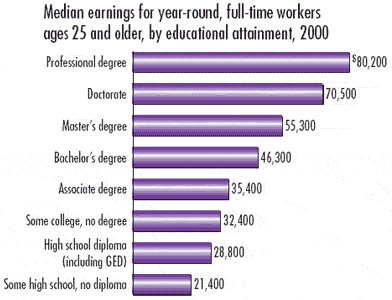|

The road to riches is paved by education—or so the data suggest. As the chart shows, median annual earnings in 2000 increased with educational attainment. There was a substantial earnings differential from the highest to the lowest levels of attainment: the median earnings of workers who had a professional degree were more than 3½ times those of high school dropouts. But workers did not need that much education to earn a bigger paycheck; the payoff began for those who completed high school. For example, the $7,400 differential for workers with a high school diploma over those who did not graduate represents a 35-percent increase in median annual earnings.
|



